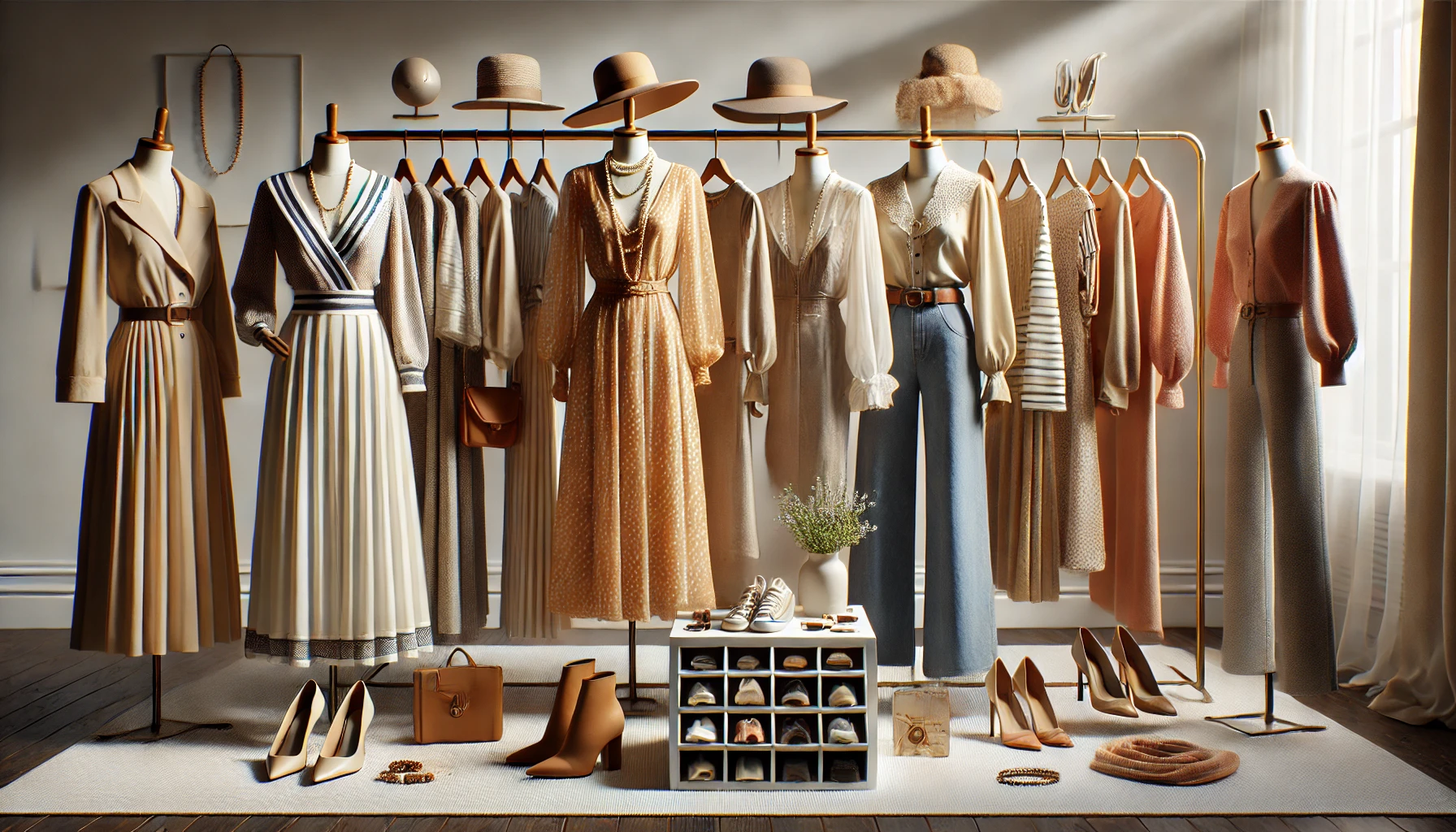Vintage Clothing: A Timeless Trend
Fashion is cyclical, and nowhere is this more evident than in the enduring appeal of vintage clothing. From flapper dresses of the roaring ’20s to the grunge flannels of the ’90s, vintage fashion allows us to connect with the past while expressing individuality. The charm of vintage clothing lies not just in its unique aesthetics but also in its sustainability and quality.
This blog explores why vintage clothing remains a timeless trend, how to incorporate it into your wardrobe, and the benefits of embracing this classic style.
What is Vintage Clothing?
Vintage clothing refers to garments that were produced in a previous era, typically over 20 years ago, but not exceeding 100 years (beyond which it becomes antique). Each piece is a reflection of the trends, craftsmanship, and culture of its time, offering a story and charm that modern fast fashion often lacks.
Why is Vintage Clothing So Popular?
1. Unique Style
In a world of mass-produced fashion, vintage pieces stand out. Each garment offers a unique design, fabric, or silhouette, ensuring you won’t see anyone else wearing the same outfit.
2. High-Quality Craftsmanship
Older garments were often made with superior materials and attention to detail, making them more durable and intricate than many modern fast-fashion items.
3. Sustainability
Vintage shopping promotes recycling and reduces waste, making it an eco-friendly alternative to buying new. Choosing vintage helps combat the negative environmental impacts of fast fashion.
4. Nostalgia and Storytelling
Vintage clothing carries historical significance and evokes nostalgia. Wearing a vintage piece is like wearing a piece of history.
5. Celebrity Endorsements
Celebrities such as Zendaya, Harry Styles, and Rihanna have embraced vintage fashion, making it a go-to trend for red carpets and everyday wear.
Decades of Vintage Fashion
Each era offers distinctive styles that continue to inspire modern fashion. Here’s a quick guide to the most popular decades for vintage clothing:
1920s: The Roaring Twenties
- Key Styles: Flapper dresses, beaded embellishments, feathered headpieces.
- Fabrics: Silk, satin, and chiffon.
- Why It’s Loved: Glamorous and iconic, ideal for formal events.
1950s: The Golden Age of Glamour
- Key Styles: Circle skirts, petticoats, fitted blouses, and wiggle dresses.
- Fabrics: Cotton, wool blends, and gingham.
- Why It’s Loved: Feminine silhouettes and playful prints make this era timeless.
1970s: Boho and Disco
- Key Styles: Maxi dresses, bell-bottom jeans, suede jackets, and sequined outfits.
- Fabrics: Polyester, denim, and crochet.
- Why It’s Loved: The blend of bohemian ease and disco sparkle resonates with free spirits.
1980s: Bold and Bright
- Key Styles: Power suits, oversized blazers, neon colors, and statement accessories.
- Fabrics: Lycra, denim, and leather.
- Why It’s Loved: Fun, bold, and unapologetically daring.
1990s: The Era of Grunge
- Key Styles: Flannel shirts, slip dresses, crop tops, and high-waisted jeans.
- Fabrics: Denim, velvet, and leather.
- Why It’s Loved: Casual and edgy, perfect for everyday wear.
How to Incorporate Vintage Clothing into Your Wardrobe
Integrating vintage pieces into a modern wardrobe can seem daunting, but with a few tips, you can create stylish and cohesive outfits:
1. Mix and Match
- Pair a vintage blazer with modern skinny jeans.
- Combine a 1950s circle skirt with a contemporary graphic tee.
2. Accessorize Strategically
Incorporate vintage accessories like brooches, handbags, or hats to add a retro touch to your outfit.
3. Start Small
If you’re new to vintage, begin with simple items like a leather belt, a classic denim jacket, or a printed scarf.
4. Focus on Versatile Pieces
Look for items that can be styled in multiple ways, such as trench coats, A-line skirts, or white blouses.
5. Tailor for Fit
Vintage sizing often differs from modern standards. Invest in tailoring to ensure your pieces fit perfectly.
Where to Find Vintage Clothing
1. Thrift Stores
Local thrift shops often carry hidden gems at affordable prices. Be prepared to spend time browsing.
2. Vintage Boutiques
These curated shops offer high-quality vintage items, often with a focus on specific decades.
3. Online Marketplaces
Websites like Etsy, eBay, and Depop have extensive collections of vintage clothing for every budget.
4. Flea Markets and Estate Sales
Explore local flea markets or estate sales for unique finds.
5. Rental Services
If you want to try vintage fashion without committing, rental services like Rent the Runway offer vintage-inspired options.
Caring for Vintage Clothing
Vintage clothing requires special care to preserve its beauty and longevity:
1. Gentle Cleaning
Handwash delicate fabrics and avoid harsh detergents. For fragile items, professional dry cleaning is recommended.
2. Proper Storage
Store vintage items in a cool, dry place. Use padded hangers for delicate dresses and avoid plastic bags, which can trap moisture.
3. Repair and Restore
Fix minor issues like loose buttons or small tears promptly to prevent further damage.
Why Vintage is the Future of Fashion
While vintage celebrates the past, it also points to the future. As the fashion industry shifts toward sustainability, vintage clothing aligns perfectly with eco-conscious values. Reusing and repurposing garments reduces waste and lowers the demand for resource-intensive production.
Conclusion
Vintage clothing is more than just a fashion trend—it’s a celebration of history, individuality, and sustainability. Whether you’re drawn to the glamour of the 1920s or the casual vibes of the 1990s, there’s a piece of vintage fashion for everyone. By embracing vintage, you not only elevate your style but also contribute to a more sustainable and thoughtful approach to fashion.


